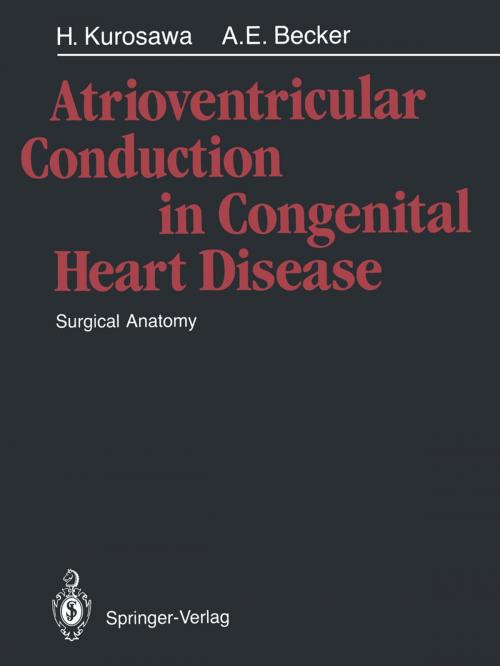Atrioventricular Conduction in Congenital Heart Disease
Surgical Anatomy
Nonfiction, Health & Well Being, Medical, Specialties, Internal Medicine, Cardiology| Author: | Hiromi Kurosawa, Anton E. Becker | ISBN: | 9784431680451 |
| Publisher: | Springer Japan | Publication: | December 6, 2012 |
| Imprint: | Springer | Language: | English |
| Author: | Hiromi Kurosawa, Anton E. Becker |
| ISBN: | 9784431680451 |
| Publisher: | Springer Japan |
| Publication: | December 6, 2012 |
| Imprint: | Springer |
| Language: | English |
The pathology of congenital heart disease has attracted much attention over the past years, as exemplified by various excellent textbooks. Most texts include a description of the position and course of the atrioventricular con duction tissues, but usually propose rules in a general setting. No systematic and meticulous description of the atrioventricular conduction tissues as they relate to the margins of septal defects in various types of congenital cardiac malformations is, to the best of our knowledge, yet available. Such detailed information is of value for cardiologists, pathologists, and surgeons alike. The cardiologist needs the information for electrophysio logical studies, including electrocardiographic tracings, as one of the tools in refining diagnosis. The pathologist should have a full understanding of the disposition of the atrioventricular conduction tissues in complex congenital malformations, not only in order to able to communicate with cardiologists and cardiac surgeons in a given case, but also because pathologists are in a unique position to enhance the understanding of atrioventricular conduction in complex congenital heart disease by means of continuous close cooperation with those in the clinical and surgical arena. For the surgeon, in-depth knowledge of atrioventricular conduction and its variability is imperative, particularly in view of the ongoing refinements in surgical techniques and options for repair, as well as improvements in the understanding of preopera tive and postoperative cardiac performance.
The pathology of congenital heart disease has attracted much attention over the past years, as exemplified by various excellent textbooks. Most texts include a description of the position and course of the atrioventricular con duction tissues, but usually propose rules in a general setting. No systematic and meticulous description of the atrioventricular conduction tissues as they relate to the margins of septal defects in various types of congenital cardiac malformations is, to the best of our knowledge, yet available. Such detailed information is of value for cardiologists, pathologists, and surgeons alike. The cardiologist needs the information for electrophysio logical studies, including electrocardiographic tracings, as one of the tools in refining diagnosis. The pathologist should have a full understanding of the disposition of the atrioventricular conduction tissues in complex congenital malformations, not only in order to able to communicate with cardiologists and cardiac surgeons in a given case, but also because pathologists are in a unique position to enhance the understanding of atrioventricular conduction in complex congenital heart disease by means of continuous close cooperation with those in the clinical and surgical arena. For the surgeon, in-depth knowledge of atrioventricular conduction and its variability is imperative, particularly in view of the ongoing refinements in surgical techniques and options for repair, as well as improvements in the understanding of preopera tive and postoperative cardiac performance.















